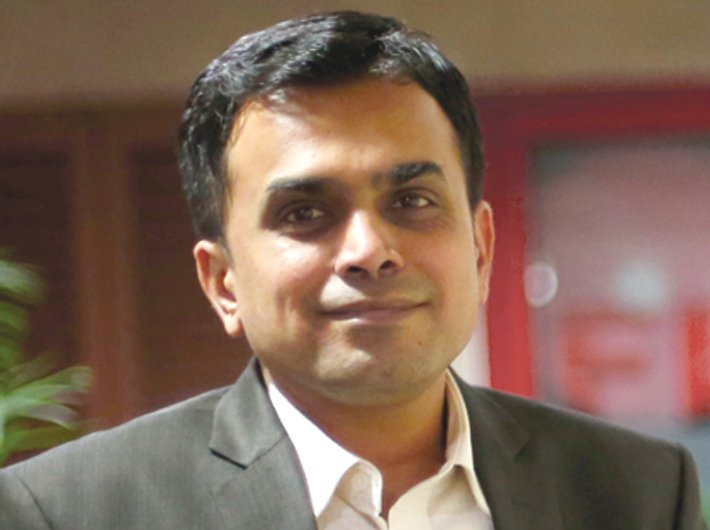The US-based Citrix provides a critical technology component that speeds up the new, improved IRCTC website. It also enables majority of the PSU and private sector banks in India to deliver anywhere, anytime, any device banking. In an interaction, Nilesh Goradia tells Shubhendu Parth about the technologies that can help governments improve their citizen service delivery, even in the remotest network-deficient regions. Excerpts:
Citrix has been driving the use of collaboration and remote infrastructure management tools in the enterprise sector. How does the company define its role in the government sector?
In terms of enabling the government and the public sector our core objective is to create a world where anybody should be able to work from anywhere. We help organisations deliver information to people wherever they are, irrespective of the network they have and the end point device that is being used to access this information. This becomes relevant for the governments because we can help deliver information at remote locations, over all kinds of network. That is our forte.
What are the key areas that Citrix will be focusing on in India?
We are focusing big on the Digital India initiative that aims to deliver services to citizens in a faster and efficient manner and we can help applications to be delivered to the remotest corner over any kind of a network – broadband, VSAT, MPLS, lease line – and device. And we do this by enabling the organisation publish its core application from its central data centre, which could be anywhere in the country and can be accessed by various entities, including the citizens across the country.
You are talking about thin client…
Yes, that’s core to Citrix. The technology can help people across regions in the state police or the central board of excise and customs to access the application from anywhere on any device, including the dumb terminals. Beside accessibility, this has several other advantages. One, thin client is power efficient. As compared to a PC that consumes around 150 watts of power, the thin client consumes around 5-10 watts. Second, if the thin client terminal conks off, one just needs to put it aside and plug in another terminal.
But then how does it resolve the network constraint issue?
The Citrix solution helps deliver services even with bare minimum network. We have worked with various public sector banks and helped them deliver applications in branches where there is no network other than the VSAT connectivity. This is a challenging task because the latency is around 600-700 millisecond. It can also go up to 1,000 or 2,000. However, Citrix XenApp and Cloud Bridge technologies can optimise the latency and deliver the application even if there is no wired network. We can in accessing the application over a satellite network. That’s a great advantage because now our app gives optimum performance over any kind of network. This helps in efficient delivery of services because the information that is now available would otherwise have been not possible to access.
Can you give an example, particularly that of a government-to-citizen service delivery project?
The new IRCTC portal uses Citrix NetScaler that enables its datacentre network to optimise the delivery of its web applications, cloud-based services, virtual desktops, enterprise business apps and mobile services. In another words, NetScaler allows IRCTC to deliver its application faster. Their aim was to issue 1,200 tickets per minute, which the Citrix technology along with other changes has allowed them to achieve. Similarly, the EPFO portals or the pension portal where the citizens have to go and access the services are good use cases.
How does it help on the user side?
NetScaler does multiple things. One, if it is a case of SSL transaction which is the case for all secured transactions like IRCTC or banking transactions, instead of processing the request on the web server, the entire processing is offloaded to the NetScaler device. This reduces the load on the server by 30 percent. It is known as SSL offload. Next, it does caching. For example, the first page of IRCTC website is common for all users. Hence, instead of fetching the page every time from the web server, it will cache it and show it to the user. It uses the same process to cache frequently searched queries and their results. So, when there is a similar query instead of going to the app and the database it throws up the local results. While the ticket reservation pattern will change, the basic data such as the train names, timing and fare remain the same. The third thing it does is compression of data being transmitted. If you see the browser it support Gzip and Deflate compression. So it basically compresses the traffic which flows out of NetScaler.
However, the basic thing it does is load balancing of the web application server. If there are multiple requests that are coming, the NetScaler ensures that it goes to the most efficient server in the backend. Simultaneously it also does TCP/IP (transmission control protocol/internet protocol) multiplexing. During the Tatkal rush hour, for instance, once the server reaches its peak capacity of handling 10,000 requests at a time it stops accepting more requests and leads to denial of service. The NetScaler on the other hand, will queue the requests on the client end but only forward 10,000 requests at the server end. This slows down the performance but the server is never unavailable.
What about the security?
XenApp is also one of the highest used products in many government entities worldwide. It is FIPS (Federal Information Processing Standard) compliant and highly used by US defence and we have lot of examples in PSUs, especially in the core banking delivery area and also with government agencies where we have helped the application to be delivered faster. Also, since the user works on an application image one cannot download any information. This makes the system secure. NetScaler, on the other hand is equipped to handle denial of service attack. If a hacker, for instance, creates or spoof 15,000 requests on the IRCTC server, the NetScaler can detect it and protect the server from getting overloaded. It can also handle SQL injection or any other kind of application level attacks.
Is Citrix there in the government sector? Over the last eight years when India was building the state data centre and state wide area network, I could not find Citrix anywhere.
Yes. We were building the base in low latency industries where turnaround time is less. That is where we have been successful. Like in BFSI, we have almost become a de facto. You will not find a bank without Citrix solution. Government is our new focus area.
Is it a recent development after the Digital India announcement?
Not really. But not much happened during the last three years of the previous government that was marked with decision paralysis. Now the impetus is more and we also have a sign up from our top management.
So which are the projects where we can see Citrix playing a major role?
Primarily the projects that require remote delivery of application. We want to play a prominent role in the GST and the tax net projects. We are also focusing on projects where security and power saving is a concern. Defence is a major focus area. The third focus area is the healthcare sector where people can easily use potable and thin client devices.
What about state data centres (SDC)?
From SDC perspective, we are looking at the refresh business. We are keen on participating in the upgrade and revamping in the SDC and the central government entities, from tax net and ministries of finance, healthcare and defence. We are also looking at business from the STPI (software technology park of India) and the regional engineering colleges. And then there is the PSU initiative, particularly the banks. Infosys is our partner and while banks are keen to upgrade from Finacle 7 to 10, Infosys itself is finding it difficult to convince banks to use it because of heavy bandwidth requirement and the rollout time. We did the ICICI Bank project with Infosys and the result was good. Now we are working with public sector banks like Punjab National Bank and Bank of India. We do not make the banks change the network or device. Instead we help them publish and access applications centrally. At ICICI Bank, without making any change in the end point we were able to take 15,000 users live on a new application in a single day. In fact, there is no need to check what is there at the end point: whether it is compatible, browser settings, absolutely nothing.
And what role do you see Citrix playing in the financial inclusion programme?
We are by default a partner to that. We are doing a project, which is in pilot phase with one of the leading PSU banks that was keen to make its loan origination system (LOS) application accessible to all branches across the country. The PSU banks have the mandate to extend loans from every branch. What this means is that every branch should be capable of giving a loan, irrespective of the type of infrastructure and network. Our pilot has helped the bank provide access to the application in areas where otherwise it was impossible to access the LOS.
Another area is the payment banks, which besides facilitating the mobile transactions have an important role to play in financial inclusion. What we require is a network connection – a datacard or a broadband and a laptop. There is no configuration required on the end point. In fact, one of our client banks has tied up with a grocery shop to set up service extension centre. It is able to facilitate banking transactions from there using just the laptop and a datacard that enables it to connect to the central branch. The shop primarily caters to daily wage earners and labourers who deposit cash at this branch. The shopkeeper, transfers the money to the person’s account in any bank in their native village using the IMPS transaction facility.

